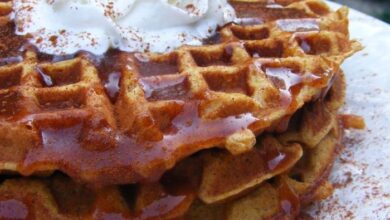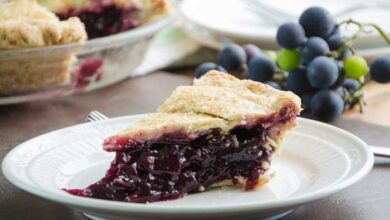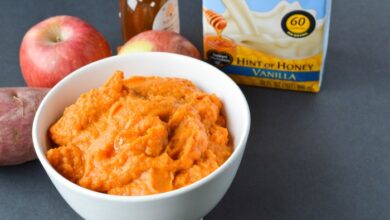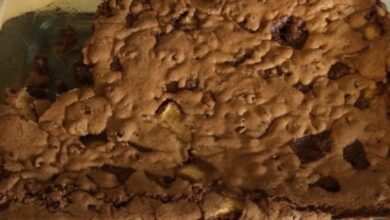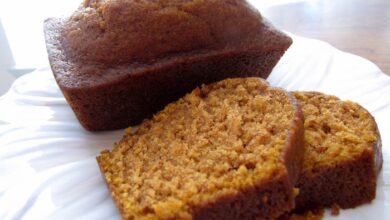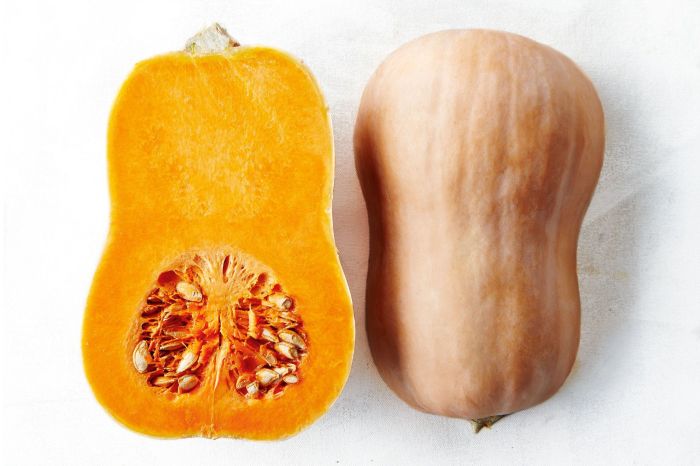
Old Fashioned Pumpkin Butter: A Sweet History and Modern Delight
Old fashioned pumpkin butter, a rich and flavorful spread with roots deep in American history, has been a beloved culinary tradition for generations. This sweet and savory condiment, made with simmered pumpkin, spices, and often a touch of brown sugar, embodies the essence of autumn’s bounty.
From its humble beginnings as a practical way to preserve the pumpkin harvest to its modern-day revival as a gourmet delicacy, pumpkin butter has evolved alongside our culinary tastes and traditions.
This article delves into the fascinating world of old fashioned pumpkin butter, exploring its origins, preparation, and culinary uses. We’ll uncover the secrets behind its distinctive flavor profile, discover its nutritional value, and uncover the cultural significance that has made it a cherished part of our food heritage.
History of Pumpkin Butter
Pumpkin butter, a sweet and savory spread made from pumpkin purée, sugar, and spices, has a rich history that spans centuries. Its origins can be traced back to early American settlers who used pumpkins, a readily available and versatile ingredient, to create a variety of dishes.
Early American Origins
Pumpkin butter’s journey began in the early days of American settlement, where pumpkins were a staple crop. Early settlers relied on pumpkins for sustenance, using them in various dishes, including pies, soups, and breads. The practice of preserving pumpkins by cooking them down into a thick, concentrated spread, known as pumpkin butter, emerged as a way to extend their shelf life and enjoy their flavor throughout the year.
Early recipes for pumpkin butter were often simple, involving simmering pumpkin purée with sugar, spices like cinnamon and ginger, and sometimes molasses or vinegar for added complexity. These recipes were passed down through generations, evolving with each family’s unique preferences and the availability of ingredients.
Regional Variations and Cultural Significance
Pumpkin butter has long been a cherished tradition in various regions of the United States, particularly in the Northeast and Midwest. In these areas, pumpkin butter has become deeply ingrained in local food culture, often associated with fall harvest festivals and family gatherings.
- Pennsylvania Dutch Country:In the Pennsylvania Dutch Country, pumpkin butter is a staple ingredient in many traditional dishes, including shoofly pie and pumpkin bread. The region’s distinctive culinary heritage has preserved the use of pumpkin butter in its cuisine, making it an essential part of local food traditions.
Old fashioned pumpkin butter is a taste of autumn that takes me back to childhood memories. The warm spices and smooth texture are perfect on toast or even as a glaze for grilled meats. Speaking of grilling, have you tried Anne’s fabulous grilled salmon ?
It’s a real crowd-pleaser and the smoky flavors would pair beautifully with the sweetness of pumpkin butter. I’m already planning to make a batch of pumpkin butter this weekend and try it on top of Anne’s salmon recipe – I think it’s going to be a delicious combination!
- Ohio:Ohio, known as the “Buckeye State,” has a long history of pumpkin butter production, with numerous small-batch producers creating unique and flavorful variations. The state’s fertile agricultural land and abundance of pumpkins have fostered a strong tradition of pumpkin butter making, which has become a symbol of Ohio’s culinary identity.
- New England:In New England, pumpkin butter has been a cherished ingredient for generations, used in pies, breads, and even as a topping for pancakes and waffles. The region’s strong agricultural heritage and love for autumnal flavors have contributed to the enduring popularity of pumpkin butter in New England cuisine.
Evolution of Pumpkin Butter
Over time, pumpkin butter has evolved from a simple, utilitarian food to a more sophisticated and versatile ingredient. The advent of modern cooking techniques and the availability of a wider range of spices have led to a greater variety of pumpkin butter flavors and preparations.
Old fashioned pumpkin butter, with its rich, spiced flavor, is a perfect accompaniment to warm, autumnal days. It’s a versatile treat, adding a touch of sweetness to everything from pancakes to ice cream. But for a truly decadent experience, try pairing it with a smooth, cold brew coffee, like the kind you can make using the sous vide cold brew coffee method.
The subtle bitterness of the coffee perfectly balances the sweetness of the pumpkin butter, creating a flavor combination that is both comforting and sophisticated.
“The essence of pumpkin butter lies in its simplicity and its ability to capture the essence of autumn in a jar.”
Anonymous
Modern Pumpkin Butter
Today, pumpkin butter is available in a wide array of flavors and textures, from traditional spiced varieties to more contemporary creations infused with flavors like maple, bourbon, or even chocolate. The popularity of pumpkin butter has also expanded beyond its traditional regional roots, with consumers across the country embracing its unique flavor and versatility.
Ingredients and Preparation
Making old-fashioned pumpkin butter is a labor of love, requiring patience and a few essential ingredients. This recipe, passed down through generations, results in a rich, smooth, and intensely flavored pumpkin butter that’s perfect for spreading on toast, biscuits, or even using as a glaze for baked goods.
Essential Ingredients
The core ingredients for old-fashioned pumpkin butter are simple, allowing the natural flavors of pumpkin to shine through.
- Pumpkin:The foundation of the pumpkin butter, choose a sugar pumpkin or pie pumpkin for its sweetness and texture.
- Sugar:Typically granulated sugar is used, but you can experiment with brown sugar or maple syrup for a more complex flavor profile.
- Spices:Cinnamon, nutmeg, ginger, and cloves are the traditional spices used in pumpkin butter, but feel free to adjust the proportions to suit your taste.
- Apple Cider:Provides a subtle sweetness and acidity that balances the pumpkin’s richness.
- Lemon Juice:A touch of lemon juice brightens the flavor and helps to prevent the pumpkin butter from becoming too thick.
Preparing Old-Fashioned Pumpkin Butter
The process of making old-fashioned pumpkin butter is straightforward but time-consuming. The long cooking time allows the flavors to meld and the pumpkin to break down into a smooth consistency.
Old fashioned pumpkin butter, with its rich, spiced flavor, is a perfect topping for so many things. It’s great on toast, pancakes, or even as a glaze for roasted vegetables. If you’re looking for a savory option, I highly recommend pairing it with crustless cottage cheese mini quiches.
The creamy texture of the quiches complements the sweet and spicy pumpkin butter beautifully. And, of course, pumpkin butter is always a delicious addition to any fall-themed dessert.
- Prepare the Pumpkin:Wash and cut the pumpkin in half, removing the seeds and fibers. Roast the pumpkin halves until tender, about 45-60 minutes at 350°F (175°C).
- Puree the Pumpkin:Once cooled, scoop the flesh from the pumpkin and puree it using a food processor or blender.
- Combine Ingredients:In a large pot, combine the pumpkin puree, sugar, spices, apple cider, and lemon juice. Bring the mixture to a boil over medium heat, stirring constantly.
- Simmer and Reduce:Reduce the heat to low and simmer the mixture for 2-3 hours, stirring occasionally, until it thickens and reaches a desired consistency.
- Cool and Store:Remove the pumpkin butter from the heat and allow it to cool completely. Store in airtight containers in the refrigerator for up to 2 weeks.
Flavor Profile and Culinary Uses
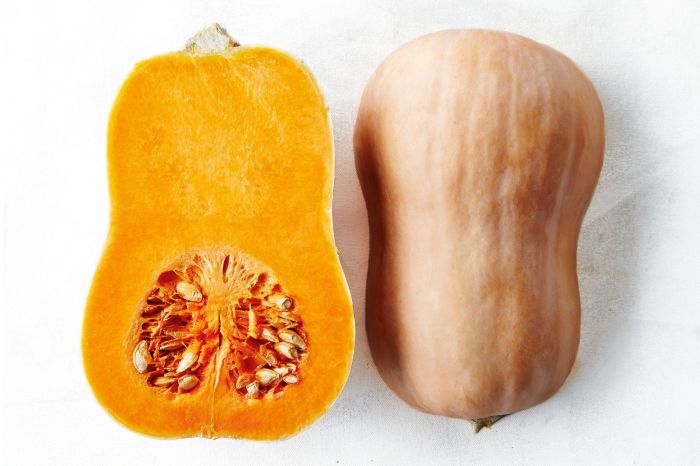
Old-fashioned pumpkin butter, with its rich, complex flavor profile, is more than just a simple spread.
It’s a culinary treasure that can elevate both sweet and savory dishes.
Distinctive Flavor Profile
The distinctive flavor profile of old-fashioned pumpkin butter is a harmonious blend of sweet, spicy, and earthy notes. The sweetness originates from the pumpkin itself, often enhanced by the addition of brown sugar or maple syrup. Spices like cinnamon, nutmeg, and ginger contribute warm, aromatic layers, while the slow cooking process creates a deep, caramelized flavor that adds depth and complexity.
The texture, smooth and velvety, further enhances the overall sensory experience.
Creative Culinary Uses
Pumpkin butter is a versatile ingredient that can be enjoyed in various ways. It’s a classic spread on toast, biscuits, and pancakes, adding a touch of sweetness and spice.
Sweet Applications
- Pumpkin Pie Filling:Use pumpkin butter as a base for a rich and flavorful pumpkin pie filling. Combine it with eggs, spices, and a touch of cream for a truly indulgent pie.
- Glaze for Desserts:Drizzle pumpkin butter over cakes, cupcakes, and cookies for a beautiful and flavorful glaze. The warmth of the spices complements the sweetness of the dessert.
- Pumpkin Butter Ice Cream:Add a swirl of pumpkin butter to vanilla ice cream for a unique and delicious flavor combination. The smooth texture of the pumpkin butter blends beautifully with the creamy ice cream.
Savory Applications
- Glaze for Roasted Vegetables:Brush pumpkin butter over roasted vegetables like carrots, sweet potatoes, and Brussels sprouts for a sweet and savory glaze that adds depth of flavor.
- Stuffing for Poultry:Incorporate pumpkin butter into your stuffing recipe for a unique and flavorful twist. The sweetness and spices complement the savory flavors of the stuffing.
- Pork Tenderloin Marinade:Combine pumpkin butter with soy sauce, garlic, and ginger for a flavorful marinade for pork tenderloin. The sweetness of the pumpkin butter balances the savory flavors of the marinade, creating a tender and juicy pork dish.
Pumpkin Butter Bread Pudding
This recipe combines the rich flavor of pumpkin butter with the comforting warmth of bread pudding.
Ingredients:
- 1 cup old-fashioned pumpkin butter
- 4 eggs
- 1 cup milk
- 1/2 cup heavy cream
- 1/2 cup brown sugar
- 1 teaspoon ground cinnamon
- 1/2 teaspoon ground nutmeg
- 1/4 teaspoon ground ginger
- 1/4 teaspoon salt
- 1 loaf challah bread, cubed
Instructions:
- Preheat oven to 350 degrees F (175 degrees C).
- In a large bowl, whisk together the pumpkin butter, eggs, milk, heavy cream, brown sugar, cinnamon, nutmeg, ginger, and salt.
- Add the cubed bread to the bowl and stir until well coated.
- Pour the mixture into a greased 9×13 inch baking dish.
- Bake for 45-50 minutes, or until the pudding is set and the top is golden brown.
- Let cool slightly before serving.
Variations and Modern Adaptations
Pumpkin butter, with its rich history and versatility, has evolved over time, resulting in a variety of delicious adaptations. From the classic spiced version to more contemporary savory twists, pumpkin butter has remained a culinary staple while embracing modern trends.
Spiced Variations
Spiced variations of pumpkin butter often incorporate warm spices like cinnamon, nutmeg, ginger, and cloves, enhancing the natural sweetness of the pumpkin. These spices create a warm and comforting flavor profile, perfect for spreading on toast, pairing with cheese, or incorporating into desserts.
Savory Variations
While traditional pumpkin butter leans towards sweetness, savory variations have emerged as a modern culinary trend. These versions incorporate ingredients like garlic, onions, herbs, and spices, creating a unique and flavorful spread that complements savory dishes.
Traditional Methods Versus Modern Adaptations
Traditional methods of pumpkin butter preparation involved slow-cooking pumpkin puree with sugar and spices in a large pot over an open fire. This process, often lasting several hours, allowed the flavors to meld and develop a rich, concentrated texture.
Modern adaptations have embraced convenience, utilizing pressure cookers, slow cookers, and even blenders to expedite the cooking process.
Popular Brands and Producers
Several brands and producers specialize in crafting high-quality pumpkin butter, both traditional and contemporary. These brands often source their pumpkins from local farms and use traditional methods to ensure a rich and flavorful product. Some popular brands include:
- [Brand Name]This brand is known for its commitment to using organic ingredients and traditional methods. Their pumpkin butter is made with real pumpkin puree, sugar, and spices, with no artificial flavors or preservatives.
- [Brand Name]This brand offers a variety of pumpkin butter flavors, including traditional, spiced, and savory variations. Their pumpkin butter is made with high-quality ingredients and is available in both jar and bulk sizes.
Nutritional Value and Health Benefits: Old Fashioned Pumpkin Butter
Pumpkin butter, a sweet and savory spread made from pureed pumpkin, offers a unique combination of flavor and nutrition. It is a good source of vitamins, minerals, and antioxidants, making it a potentially beneficial addition to a balanced diet.
Nutritional Content
Pumpkin butter is a concentrated source of nutrients found in pumpkins. A typical serving size of 2 tablespoons provides a range of essential vitamins and minerals.
- Vitamin A: Pumpkin butter is rich in vitamin A, which is crucial for maintaining healthy vision, skin, and immune function. A 2-tablespoon serving can provide about 10% of the daily recommended intake of vitamin A.
- Vitamin C: This antioxidant vitamin supports collagen production, wound healing, and immune function. A 2-tablespoon serving of pumpkin butter can provide about 5% of the daily recommended intake of vitamin C.
- Potassium: This mineral plays a vital role in regulating blood pressure, muscle function, and nerve transmission. Pumpkin butter provides a modest amount of potassium, contributing to overall health.
- Fiber: Pumpkin butter contains dietary fiber, which aids in digestion, promotes satiety, and helps regulate blood sugar levels.
Health Benefits
The nutritional content of pumpkin butter contributes to several potential health benefits:
- Improved Vision: The high vitamin A content in pumpkin butter supports eye health and may help prevent age-related macular degeneration, a common eye condition.
- Enhanced Immune Function: Vitamins A and C, along with antioxidants found in pumpkin butter, can boost the immune system, helping the body fight off infections and maintain overall health.
- Digestive Health: The fiber in pumpkin butter promotes healthy digestion by adding bulk to stool and regulating bowel movements.
- Heart Health: The potassium in pumpkin butter can help regulate blood pressure, which is a key factor in maintaining heart health.
Dietary Considerations
While pumpkin butter offers several nutritional benefits, it’s essential to consider a few dietary factors:
- Sugar Content: Pumpkin butter is naturally sweet, but it can also be high in sugar, especially if commercially prepared versions contain added sugar. Individuals managing blood sugar levels should consume pumpkin butter in moderation and choose varieties with minimal added sugar.
- Allergies: Some individuals may have allergies to pumpkins or other ingredients commonly used in pumpkin butter. It’s important to check the ingredient list and consult with a healthcare professional if you have any allergies.
- Calorie Intake: Pumpkin butter is relatively calorie-dense, so it’s important to incorporate it into a balanced diet and consume it in moderation.
Cultural Significance and Traditions
Pumpkin butter, with its rich history and versatility, has woven itself into the fabric of various cultures, becoming more than just a condiment; it’s a symbol of heritage, tradition, and shared experiences.
Cultural Interpretations of Pumpkin Butter, Old fashioned pumpkin butter
Pumpkin butter’s cultural significance varies across different communities, reflecting their unique traditions and culinary practices.

